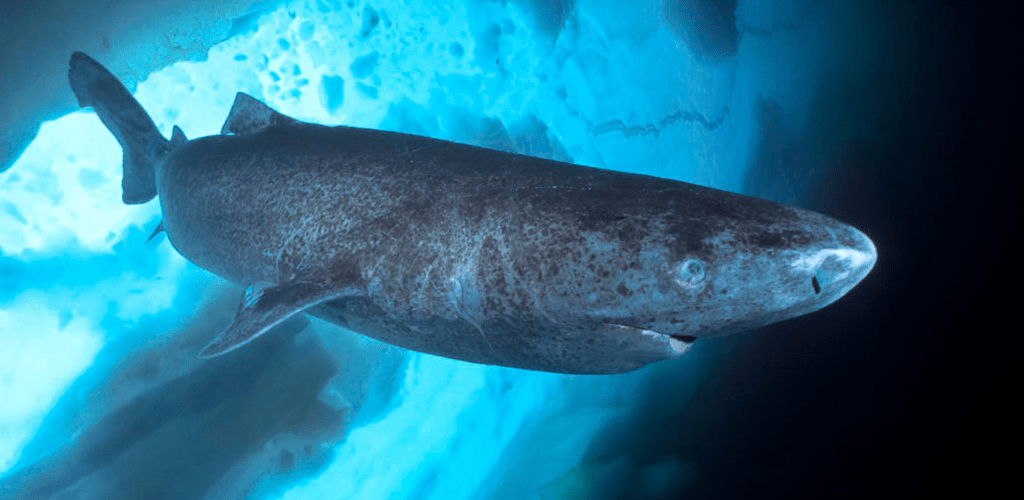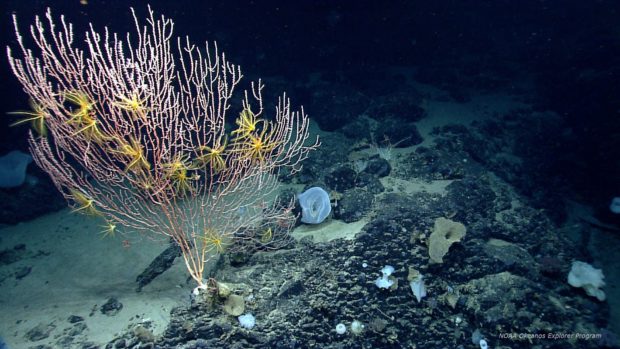We have much more to do and your continued support is needed now more than ever.
First Atlantic Marine National Monument Protects World’s Oldest Vertebrate

It’s just another day under the sea for the Greenland shark, the world’s longest-living vertebrate. But September 15, 2016, is also the day that nearly 5,000 square miles of this shark’s habitat received forever protection as a Marine National Monument, as well as a historic, precedent-setting day for marine conservation in the United States. President Obama used his authority under the Antiquities Act to designate Northeast Canyons and Seamounts as the first Marine National Monument in the Atlantic Ocean.
Before today, hundreds of national monuments had been established to protect habitat on land, yet there were only four marine monuments in existence, all of which were located in the Pacific Ocean. But, the Atlantic Ocean also holds amazing treasures worthy of protection.
Almost 28,000 National Wildlife Federation supporters took action and called on President Obama to safeguard this marine wilderness. This “monumental” achievement for marine conservation brings new attention to the importance of protecting biodiversity hotspots in our oceans, and is a critical step in creating an eventual network of “blue parks” around U.S. waters.
Please join us in thanking President Obama for protecting part of the Greenland shark’s habitat and setting an important precedent for ocean conservation and climate resilience!
Thank President Obama
Northeast Canyons and Seamounts contains underwater canyons deeper than the Grand Canyon, and seamounts or mountains that are taller than any mountain ranges east of the Rockies. This deep sea habitat is home to a wide variety of marine wildlife, ranging from porpoises and sperm whales to rare, thousand-year-old corals and staple fish species like the Atlantic cod. The underwater landscapes of Northeast Canyons and Seamounts are amazing, but it’s what lies beneath the Monument’s peaks and lives within its depths that is truly awe-inspiring.
In mid-August, the world found out just how amazing deep-sea creatures can be, when researchers from the University of Copenhagen publicized exciting new information about the longevity of the Greenland shark. The shark was jokingly referred to by the team’s lead researcher as “a giant swimming nose,” since the Greenland shark has terrible eyesight and relies on its powerful sense of smell when hunting food in the deep, cold waters of the North Atlantic and Arctic oceans. It is one of only two shark species found in the Arctic, and a key portion of its North Atlantic habitat range includes the deep-sea canyons of Northeast Canyons and Seamounts.
The University of Copenhagen researchers used several bycatch specimens to carbon date lenses in eyes of Greenland sharks, and discovered that the largest specimen was likely 392 years old! Although it should be noted that the range of possible ages for the specimen in question stretches from 272 to 512 years, that makes the Greenland shark the longest-living vertebrate in the world, even when going by conservative estimates!
This means that the oldest Greenland sharks may have been swimming through our waters shortly after Columbus came to America, and could have been exploring what would become the Northeast Canyons and Seamounts as the Pilgrims landed at Plymouth Rock. Truly, amazing things come from the deep!
Timeline of historical events that some of today’s Greenland sharks may have been alive for:
1504 — Michelangelo’s statue David was erected in Florence, Italy (this was only 12 years after Columbus “discovered” America, i.e. sailed the ocean blue)
1620 — The Pilgrims land at Plymouth Rock
1776 — Founding of the United States
2008 — President Obama is first elected
2016 — Today





















